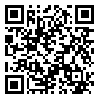
International Journal of Industrial Engineering & Production Management
Iran University of Science and Technology
BibTeX | RIS | EndNote | Medlars | ProCite | Reference Manager | RefWorks
Send citation to:
URL: http://ijiepm.iust.ac.ir/article-1-61-en.html
Product support and after sales services are among the important areas which have attracted the attention of managers and decision makers, especially in the field of supply chain and logistics management. Supplying the spare parts of products to guarantee the desired operation of product during its life time is in the focus of attention of logistics and supply chain managers. What makes the demand forecasting possible and real is the correct identification of demand affecting factors and their relation. So, the best model of spare parts' demand forecasting is one which incorporates all factors influencing the failure rate of the parts. This article presents a model which incorporates the environmental covariates influencing the failure rate as well as the reliability characteristics of parts. In addition, a portion of spare parts demand is due to the interaction of different parts in a system which is known as failure interaction. This factor is regarded in the model as another factor affecting the failure rate of the parts and, the demand estimation as a result. This model uses the reliability models and renewal process to forecast spare parts demand, based on reliability, operational environment and failure interaction.
Received: 2009/05/27 | Published: 2009/04/15
| Rights and permissions | |
 | This work is licensed under a Creative Commons Attribution-NonCommercial 4.0 International License. |




